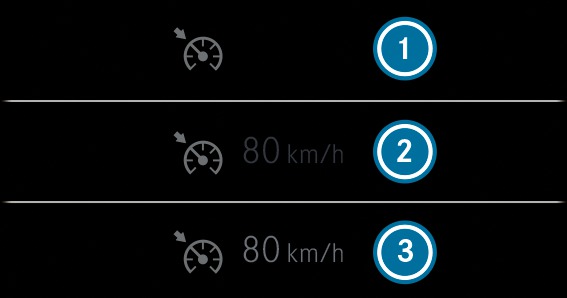Cruise control accelerates and brakes the vehicle automatically in order to maintain a previously stored speed.
If you accelerate to overtake, for example, the stored speed is not deleted. If you remove your foot from the accelerator pedal after overtaking, cruise control will resume speed regulation back to the stored speed.
Cruise control is operated using the corresponding steering wheel buttons. You can store any speed above 20 km/h.
If you fail to adapt your driving style, cruise control can neither reduce the risk of an accident nor override the laws of physics. It cannot take into account road, weather or traffic conditions. Cruise control is only an aid. You are responsible for the distance to the vehicle in front, for vehicle speed, braking in good time and for staying in your lane.
The status of cruise control and the stored speed are shown in the Instrument Display.




Cruise control may be unable to maintain the stored speed on uphill gradients. The stored speed is resumed when the gradient levels out.
On long and steep downhill gradients, you should change down to a lower gear in good time. Take particular note of this when driving a laden vehicle. By doing so, you will make use of the engine's braking effect. This will take some of the strain off the brake system and prevent the brakes from overheating and wearing too quickly.
In traffic situations where frequent speed changes are required, e.g. in heavy traffic or on winding roads.
On slippery roads. Accelerating can cause the drive wheels to lose traction and the vehicle could then skid.
If you are driving when visibility is poor.

